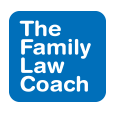
The Family Court System
Going to Family Court? It can be intimidating. Here’s the information you need about the system in Ontario and resources to learn more about the process.
Here are some sites that will help
The Courts in Ontario
We have 3 courts dealing with family law matters in Ontario.
The Ontario Court of Justice
The Ontario Court of Justice can hear only family disputes covered by provincial legislation, which covers custody and access, child support, spousal support for married and common law couples, and adoption and child protection matters. It doesn’t handle property issues or divorce.
The Superior Court of Justice
This court deals with many of the same things as the Ontario Court of Justice, including custody and access, child support, and spousal support. In addition, the Superior Court of Justice handles divorce cases and property issues.
Family Court (often referred to as the Unified Family Court)
This court is the joint creation of the Federal and Provincial governments and can hear all family matters. This is the only choice for people pursuing a family court matter where they’re available. Wherever there’s a Family Court, there aren’t separate Ontario and Superior Courts. Family Courts are available in:
- Barrie
- Bracebridge
- Brockville
- Cobourg
- Durham Region
- Hamilton
- Kingston
- Lindsay
- London
- Napanee
- Newmarket
- Ottawa
- Peterborough
- Perth
- St. Catherines
Which Court is available in your jurisdiction?
To find out what court is available to you, check out the list of court addresses at the Ministry of the Attorney General’s website.
What are the Rules you need to know?
The Family Law Rules are the road map for all family law matters in Ontario. If you’re going to be acting for yourself in any family law matter in a court in Ontario, be sure to have these handy.
You’ll be assumed to know and understand the Rules, even if you’re a self-rep. They apply to everyone, and not just to the lawyers. Take a look at Contents at the top of the Rules to see what they cover.
Some of the Rules include:
- Various time limits
- Where a case is to start and to be heard
- How a document has to be served
- How to start a case
- How to respond to a case brought against you.
- Financial and document disclosure requirements
- Motions to change orders
- Offers to settle
- Questioning witnesses, experts, admissions of facts, and evidence at trial
- Affidavit requirements if you’re seeking custody or access of a child.
Some basic resources
Community Legal Education Ontario (CLEO) provides a detailed flowchart that outlines the steps in a family law court case in Ontario. It’s a terrific guide. It sets out the Rules and Forms you need to know about at each step. Don’t go to court without it. Check out more about this at CLEO’s Steps in a Family Law Case – Flowchart in our Library.
Practice Directions and Policies
The Superior Courts of Justice in Ontario are grouped into eight Regions for administration purposes. Each region issues Practice Directions and Policies, which outlines how proceedings are conducted in that region.
It’s a good idea to check out the Practice Directions in your area so you know what to expect and how to proceed in the courthouse you’ll be attending. Or, you can use one of the services available here at The Family Law Coach to have a lawyer give you the assistance you want.
Coping With the Courtroom: Essential Tips and Information for Self-represented Litigants
This is a publication from the National Self-represented Litigants Project spearheaded by Dr. Juli Macfarlane from the University of Windsor.
Not every section is relevant to every self-rep, so you don’t have to read the whole document. But there’s useful information here for each stage of the process. Highly recommended.
For more resources and guides check out
Steps in the Process










